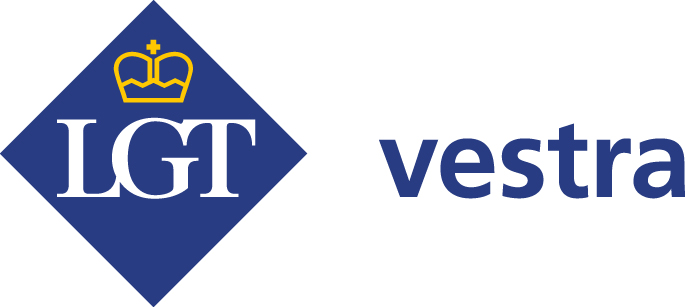This month:
Crisis averted?
Warnings of another crisis overblown.
Developed market consumer sector holds promise.
Pockets of value in both equities and credit.
Potential seen in UK domestic stocks.
Chinese currency machinations closely watched.
Featuring this month’s experts:
findaWEALTHMANAGER.com is a gateway to the UK’s leading wealth managers and we regularly tap their investment expertise for the benefit of our users.
Looking ahead to September, hidden value opportunities amid the market maelstrom and currency and interest rate manoeuvres are top of the agenda, along with unwinding of surpluses in the commodities markets.
Fortune may favour the brave with developed market equities
Insights from:

Alex Imrie, Investment Manager at Smith & Williamson, says:
The last few weeks have proved, once again, that the investment environment is not always predictable. It was only a few months ago that financial markets saw the major risk on the horizon as Greece. That is now yesterday’s news and investors are, quite rightly, focused on China and the timing of any interest rate rise in the US.
The difficulty in this environment is to remain objective and look for the value that the market is offering. Our view of the investment outlook is rather more positive than current market levels suggest. Though China’s growth rate is undoubtedly slowing, we still see growth in the money supply and the housing data is positive so we are reassured that growth, overall, remains at reasonable levels. In the US, interest rates will eventually rise, though we doubt that we will see the first move in September, perhaps not even this year.
As a result, there is value in the low current prices and we see the pullback in equity markets as an opportunity to invest. Of course, various factors could temporarily derail this view and with fear driving markets in the short term we could see market levels move lower still. However, timing is far easier in hindsight and one should buy when fundamental analysis and objective reasoning suggests.
The most attractive opportunities are in developed markets. Falling exchange rates across the Asian economies should mean that inflation remains low across the Western world which, in turn, will be positive for the consumer. In the coming weeks our bias is likely to be towards the developed-market consumer and domestically-focused companies and sectors. In the UK, this means that we will be looking for opportunities and concentrating on the mid-cap space, where companies are better able to benefit from the current environment.

Alex Imrie
Investment Manager at Smith & Williamson
Is there hidden value amid the market maelstrom
Insights from:

Tom Becket, Chief Investment Officer at Psigma, says:
It has been a very testing last few months for global asset markets, following a strong start to the year. While it is difficult to keep one’s head when newspapers and the twenty-four hour news outlets are in full “Trillions of dollars wiped off of global share prices” mode, we believe that a focus on the fundamentals, sensible evaluation, and as always, some patience is required.
Just as we were cautioning that markets and investor sentiment had run ahead of reality earlier this year, we are not convinced that the actual global economic backdrop and corporate health is presently reflected in recent market behaviour. Only a fool would suggest that markets could not fall further from today’s attractive levels, but certainly we feel that certain asset prices and valuations are getting to levels where some equity and credit markets, both in the developed and emerging worlds will prove rewarding from a medium-term perspective. Having deliberately run higher than average cash weightings for the last few months, we are now assessing specific opportunities to put money to good use.
In conclusion, we recognise that there are risks to the global economy and markets and would certainly like to see some stability in China and some of the other emerging market economies and asset markets. However, many markets have moved quickly to depict a challenging current environment and in cases now underestimate future growth potential.
In general we are comforted both by the prices we are paying for many assets in a world that is still growing and where companies can grow their profits. Unless the conditions we are investing in deteriorate further from here, which is possible in the reduced volume trading environment that is a characteristic of the summer months, we expect to use the significant weakness in some markets to increase exposure to investments we like for the long term.

Tom Becket
Chief Investment Officer at Psigma
Keep Chinese currency manoeuvres in mind
Insights from:

Jonathan Marriott, Chief Investment Officer at Vestra Wealth, says:
August’s change of regime for the Chinese currency sparked off extraordinary global market volatility, but I believe that alarmist comments about another financial crisis are just that.
The Chinese stock market had risen over 100% in the twelve months prior to the fall, supported by investors taking leveraged positions. The bubble then burst dramatically, yet market indices remain well above the levels of last year. China’s growth may be slowing, but it is by no means in a recession.
The IMF and US have long urged the Chinese towards a more flexible approach to the yuan exchange rate, with the latter wanting rises to reduce China’s competitive advantage. The Chinese finally moved at a time of slowing economic growth to allow the currency to fall, yet we need to remember that the actual movement is only about 3%. Since 2012, the yen has fallen over 55% relative to the dollar and the yuan is almost unchanged.
The Americans should beware of what they wish for. Since 2003, the Chinese have been building reserves as their trade surplus increased and these were reinvested in Treasuries. This helped suppress long-term yields and encouraged consumer spending, including on Chinese goods – thus further boosting the Chinese surplus that could be invested in Treasuries and creating a virtuous circle for both economies.
China is estimated to have accumulated $1.48 trillion in US debt (over 10% of that outstanding) and this year the Chinese have been supporting the currency to prevent it falling further by selling dollars. As a result they have turned net sellers of Treasuries, which may explain why US Treasuries did not rally more in August’s “risk off” scenario.
Since “Black Monday” we have seen China cut rates, better US consumer confidence and positive revisions to US GDP growth for the second quarter. Comments from FOMC committee members have suggested that a September rate rise is now less desirable amid market turmoil, oil prices still down and inflation remaining low. A small (but not very impactful) move is still possible, but I expect rates to rise only very slowly and to peak at lower levels than in previous cycles (about 2%).

Jonathan Marriott
Chief Investment Officer at Vestra Wealth
China: Beware further bumps in the road
Insights from:

Rosie Bullard, Portfolio Manager at James Hambro & Partners, says:
The combination of concerns over slowing growth in China and US interest rate rises triggered a sell-off in equities in August, but it has not marked the start of the next bear market. This was not a “black swan” event, but one that did send shockwaves around the world.
Ultimately, the Chinese Government appeared concerned that its economy would be adversely affected by higher US interest rates and hence it took steps to devalue its currency. This move, alongside the volatility seen in its domestic stock market and questions over growth rates, spooked the markets. Doubts on the outlook for one of the world’s largest economies then brought back into question the timing and magnitude of the first US rate rise, in itself causing further volatility.
In our portfolios, we have taken some risk off the table, most recently reducing our equity weighting in Asia. This has been an incremental process rather than a knee-jerk reaction to events in August and keeps us in a stronger position.
The Chinese move from a manufacturing-led to a consumer-led economy is an exceptionally difficult transition to manage as there are so many complex issues to juggle, and it would not be surprising to see more bumps in the road. Meanwhile, US rate rises are still looming and whilst increasing rates themselves are a result of a strengthening economy, their timing and magnitude is uncertain and this may result in further periods of unsettled markets. Our higher cash weighting gives us firepower to react if we see another sell off.
We remain positive on equities in the medium term. There remains value in UK domestic stocks, positive momentum continues in Japan and, as the impact of the Greek crisis wanes, Europe is on the path to recovery.

Rosie Bullard
Portfolio Manager at James Hambro & Partners
Where next for the Fed’s rate rise plans?
Insights from:

Patrick Gordon, head of research at Killik & Co, says:
Global equity markets endured a turbulent August as further disappointing data out of China and weak commodity prices increased concerns over the outlook for global growth and inflation.
It is not unusual for markets to experience corrections during extended periods of strong performance and the recent sell-off should be viewed in the context of equity markets that have largely been in an upward trend since 2009. Market pullbacks, particularly when broad-based and indiscriminate, can provide opportunities to access high-quality investments at more attractive valuations.
A feature of the current “bull-run” has been multiple expansion (higher valuations) in various sectors, and these premium valuations have arguably reflected investors’ faith that Central Banks will step in with further policy easing measures on signs that the economic recovery may be faltering or that financial market conditions are deteriorating. The recent market sell-off and sentiment shift suggests that some of this confidence in policymakers may be eroding, making it all the more important that the US Federal Reserve gets upcoming decisions on interest rates right.
Although we believe the Fed is keen to raise rates, providing it with the scope to use a conventional monetary policy tool (ability to cut rates) should the US economic recovery falter, they may have missed their window for doing so in the near term. The implied probability of a rate rise at the September meeting, based on Fed Funds futures, fell from about 54% earlier in August to about 24% later in the month (data source: Bloomberg). Comments by the Fed’s Stanley Fischer at the Jackson Hole symposium, which didn’t completely shut the door on a September hike, saw the implied probability edge back up, but remain well below 50%. The economic data between now and the September meeting will be important in the Fed’s decision-making. However, the strength of the US dollar and uncertainty over the prospects for inflation, combined with the current market volatility, may stay the Fed’s tightening hand for the time being.

Patrick Gordon
Head of research at Killik & Co
Careful with commodities as supply and demand begin to balance out
Insights from:

Jonathan Raymond, Investment Manager at Quilter Cheviot, says:
Commodities appear to be hitting the news frequently of late for all the wrong reasons. Whether you’re producing iron ore in Western Australia, oil in the US Mid-West, milk in West Wales (as my family do,) or wheat in Eastern England, recent price falls have been unhelpful for profitability and detrimental for investors in the resource sectors.
Each commodity market has differing dynamics and reasons for weakness, but the basic laws of supply and demand imply excess supply in all of these markets.
High prices in the commodity complex through the period since 2011 combined with record low interest rates has encouraged huge investment in mines, oil wells and dairy farms and supply has, as a result, risen. ‘Twas ever thus in commodity markets where periods of “boom” were typically followed by a “bust” as higher prices stimulated higher supply to bring the market back into balance.
If history is any guide, prices will fail to recover until excess inventories of the commodity are cleared and there are a few signs that this is beginning to happen in certain areas. For the time being though, we feel the oil and base metals markets will stay well-supplied and see limited significant upside in the short term and, as a result, maintain a preference for the more defensive names in each sector, which have the lowest cost of production and strongest balance sheets with which to ride out the storm.
The time will come when this supply/demand balance is restored and there are plenty of good companies on our radar that could look attractive at that point. However, in the short term, we are happy to maintain our defensive stance.

Jonathan Raymond
Investment Manager at Quilter Cheviot
Important information
The investment strategy explanations contained in this piece are for informational purposes only, represent the views of individual institutions, and are not intended in any way as financial or investment advice. Any comment on specific securities should not be interpreted as investment research or advice, solicitation or recommendations to buy or sell a particular security.
We always advise consultation with a professional before making any investment decisions.
Always remember that investing involves risk and the value of investments may fall as well as rise. Past performance should not be seen as a guarantee of future returns.
